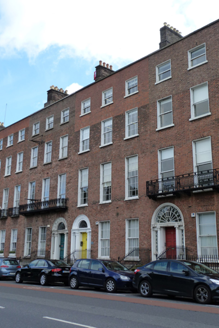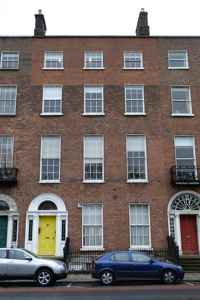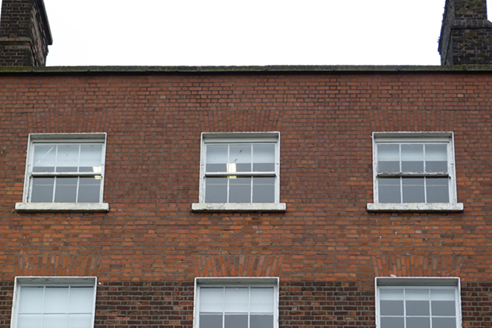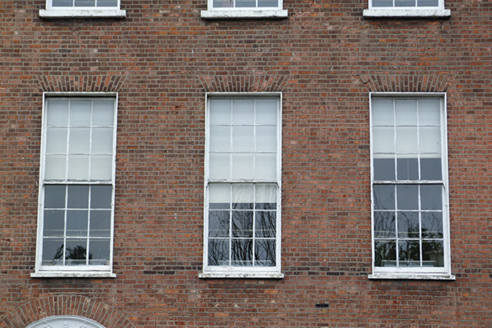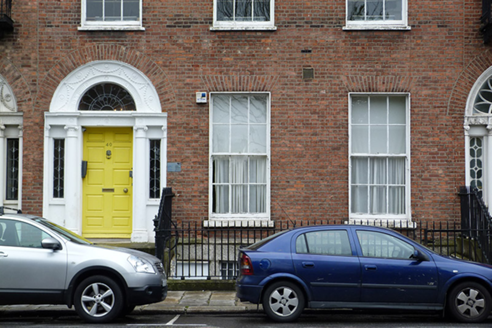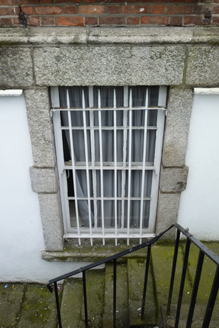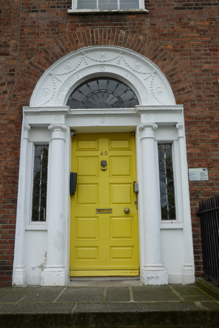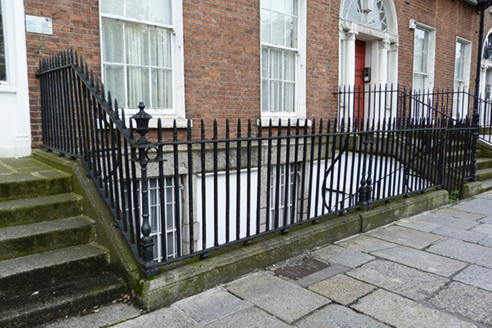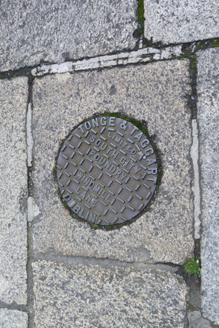Survey Data
Reg No
50100506
Rating
Regional
Categories of Special Interest
Architectural, Artistic
Original Use
House
In Use As
Office
Date
1780 - 1800
Coordinates
316842, 233494
Date Recorded
10/08/2016
Date Updated
--/--/--
Description
Attached three-bay four-storey former house over basement, built c. 1790 as one of terrace of four (Nos. 37-40). Now in use as offices. Pitched slate roof to front part, hipped to north, behind refaced brick parapet with granite coping, and having two roofs perpendicular to street to rear, south roof being fully hipped and north having curved hip to east. Shouldered brick chimneystacks with clay pots. Flemish bond brown brick walling on moulded granite plinth course over rendered basement walling; walling to top floor recently rebuilt in red brick. Square-headed window openings, diminishing in height to upper floors, with raised rendered reveals and painted granite sills; carved granite block-and-start surrounds to basement openings. Timber sliding sash windows, nine-over-nine pane to first floor, three-over-three pane to top floor and six-over-six pane elsewhere. Cast-iron security grilles to basement windows. Apparently timber sliding sash windows to rear. Round-headed principal doorway with moulded rendered surround and doorcase having fluted frieze and cornice, engaged Ionic columns with pilaster responds flanking leaded geometric sidelights, petal fanlight within slight recess and having fluted and rosetted surround, in turn having surround with swags and rosettes, and ten-panel timber door with brass furniture. Granite platform with five granite steps. Basement area enclosed by wrought-iron railings with decorative cast-iron posts on moulded granite plinth. Flight of granite steps with wrought-iron handrail leading to basement area. Cast-iron coal-hole covers set in granite flags to pavement. Interior: first floor rooms redecorated c. 1855 in Louis XV style, with highly ornate bowed rear room.
Appraisal
No. 40 Merrion Square forms part of the original development of the eighteenth-century square. It was built on a plot leased to Edward Kent, in the late eighteenth century. It retains a tripartite Adamesque doorcase, with delicate sidelights and fanlight, that adds artistic detailing to the otherwise restrained façade. Important interior, described by Casey (2005) as most opulent. Together with intact setting details, it contributes to the intact appearance of the square. Developed as part of the Fitzwilliam Estate, the square is one of the best-preserved Georgian streetscapes in Ireland. The north, east and south sides are lined with terraced houses of eighteenth and nineteenth-century date, while the west side is terminated by the garden front of Leinster House. The houses of the east side are the most uniform on the square, maintaining similar building heights and fenestration patterns. Individuality was introduced through the use of elaborate doorcases, window ironwork and interior decorative schemes. The east side of the square was originally set out in five large plots and the houses built here were generally narrower than those on the north side and built in a piecemeal fashion.
